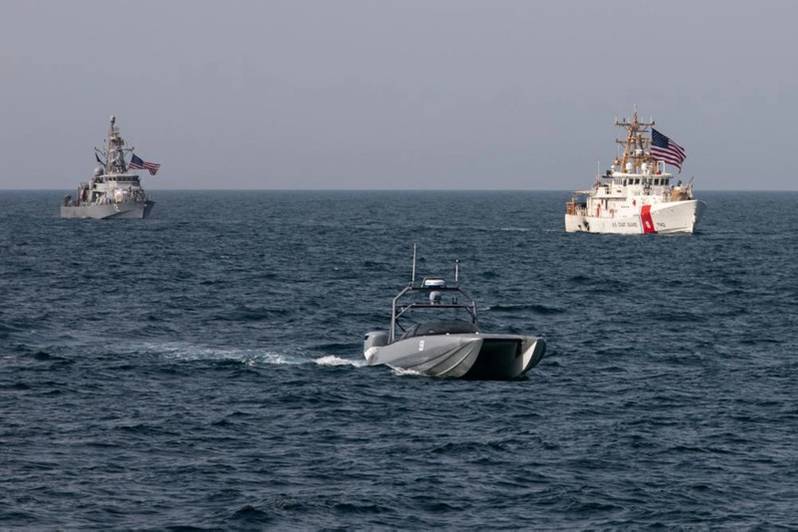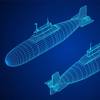Unmanned Maritime Systems Development Accelerates
There is little question that world militaries see the value of unmanned systems to complement their manned counterparts. The wars in Iraq and Afghanistan accelerated the development of unmanned aerial systems and unmanned ground systems to meet urgent operational needs. Now, there is increasing interest in unmanned surface systems, resulting in their placement on an accelerated development path.
Like their air and ground counterparts, these unmanned surface systems are valued because of their ability to reduce the risk to human life in high threat areas, to deliver persistent surveillance over areas of interest, and to provide options to warfighters that derive from the inherent advantages of unmanned technologies.
Taking these unmanned surface systems from the drawing board to development and fielding is not a trivial task. However, it is one that has been quickened by a wide range of U.S. national and international exercises, experiments and demonstrations where these systems have been put in the hands of operators who have provided valuable feedback that has led to iterative improvements in these systems.
Column space does not allow for a full review of all of these events, but briefly, these include S2ME2 ANTX, the Bold Alligator series, Valiant Shield, Dawn Blitz, Steel Knight, Valiant Shield, Trident Warrior, Coastal Trident, the Integrated Battle Problem series, and many others.
In just the last year alone we saw International Maritime Exercise, Autonomous Warrior, NATO Robotic Experimentation and Prototyping Maritime Uncrewed Systems, Digital Horizon, Fifth Fleet Cutlass Express, Digital Shield, Integrated Battle Problem, and BALTOPS, among others.
While it is difficult to single out one exercise as emblematic as one that has accelerated unmanned surface system development and that presages the future use of these USVs for a variety of important military missions, Digital Horizon is a good exercise to unpack to understand the strides made with these systems. Here is how one analyst previewed this exercise:
A flotilla of unmanned floating sensor platforms is underway in the Arabian Gulf to help the U.S. Navy find and respond to abnormal maritime activity…Digital Horizon is integrating 15 different types of unmanned systems—10 of them operating with the U.S. 5th Fleet for the first time—as well as communications, artificial intelligence and machine learning technologies from industry partners.
Digital Horizon 2022 will feature a formidable fleet of cutting-edge platforms and technologies. The USVs taking part include Elbit Systems’ Seagull, iXBlue DriX, L3Harris Arabian Fox, Marine Advanced Robotics WAM-V, MARTAC’s Devil Ray T-38, Ocean Aero TRITON, Open Ocean Robotics Data Xplorer, Saildrone Explorer, Seasats X3 and SeaTrac SP48.
Digital Horizon was a three-week event in the Middle East focused on employing artificial intelligence and 15 different unmanned systems (12 USVs and 3 UAVs), many of which operated in the region for the first time. The exercise, meant to be a continuation of IMX22 but at a significantly larger scale, was hosted by Task Force 59, and builds on the work done during IMX22.
Digital Horizon brought together new, emerging unmanned technologies and combined them with data analytics and artificial intelligence in order to enhance regional maritime security and strengthen deterrence by applying leading-edge technology and experimentation in unmanned and artificial intelligence applications for the Navy. A key goal of Digital Horizon was to speed new technology integration across the 5th Fleet, and seek alternative, cost-effective solutions for conducting Maritime Domain Awareness (MDA) missions.
One of the features of Digital Horizon, and in line with the first word of the exercise, “Digital,” was the ability to command and control five unique drones from a single point of contact, a capability long sought by U.S. Navy officials. The Navy is acutely aware of the increasing cost of manpower and is dedicated to moving beyond the current “one UXS, multiple joysticks, multiple operators,” paradigm that has plagued UXS development for decades.
While it was not called out as an explicit goal of Digital Horizon, the sheer volume of data vacuumed in by the myriad of unmanned platforms participating in the exercise advanced the use of big data, artificial intelligence and machine learning as assets that could take this vast amount of data—far too much for even a large number of humans to make sense of—and turn it into meaningful and actionable information of immediate use to operators.
Another benefit of leveraging these cutting-edge technologies—especially in light of recent actions such as Iran’s seizure of two U.S. Saildrone USVs in the Red Sea in September 2022—is that no valuable data is retained on the USV. Rather, that data is pushed to the cloud (for Digital Horizon, via a Silvus mesh network) where it is protected and can be downloaded by friendly forces. This presages a concept-of-operations (CONOPS) that will likely advance the use of unmanned surface systems, as concerns about adversaries stealing and exploiting data can be completely eliminated.
While the focus of this article is on the totality of Digital Horizon, I am using the T-38 Devil Ray as an example of how many similar-sized USVs can be equipped with multiple state-of-the-art COTS sensors to provide persistent surveillance. For example, the T-38 provided AIS, full motion video from SeaFLIR-280HD and FLIR-M364C cameras, as well as the display of radar contacts on a chart via the onboard Furuno DRS4D-NXT doppler radar. These were all streamed back to Task Force 59’s Robotics Operations Center via high bandwidth radios and SATCOM.
Most military mariners who have had the experience of one organization or another installing new technology on their ships are well (often painfully) aware of the plethora of rules and regulations that must be followed before any new systems can be bolted onto a ship—let alone the difficulties of integrating that technology into the ship’s other systems and sensors. The value of using a COTS USV such as Devil Ray for a surveillance mission is that new technology can be inserted without these restrictions, thus achieving the U.S. Navy’s goal of accelerating technology insertion into the fleet. World navies will be well-served to leverage the lessons of Digital Horizon to accelerate the use of unmanned surface systems in their fleets.
 Photo courtesy Jack Rowley
Photo courtesy Jack Rowley











